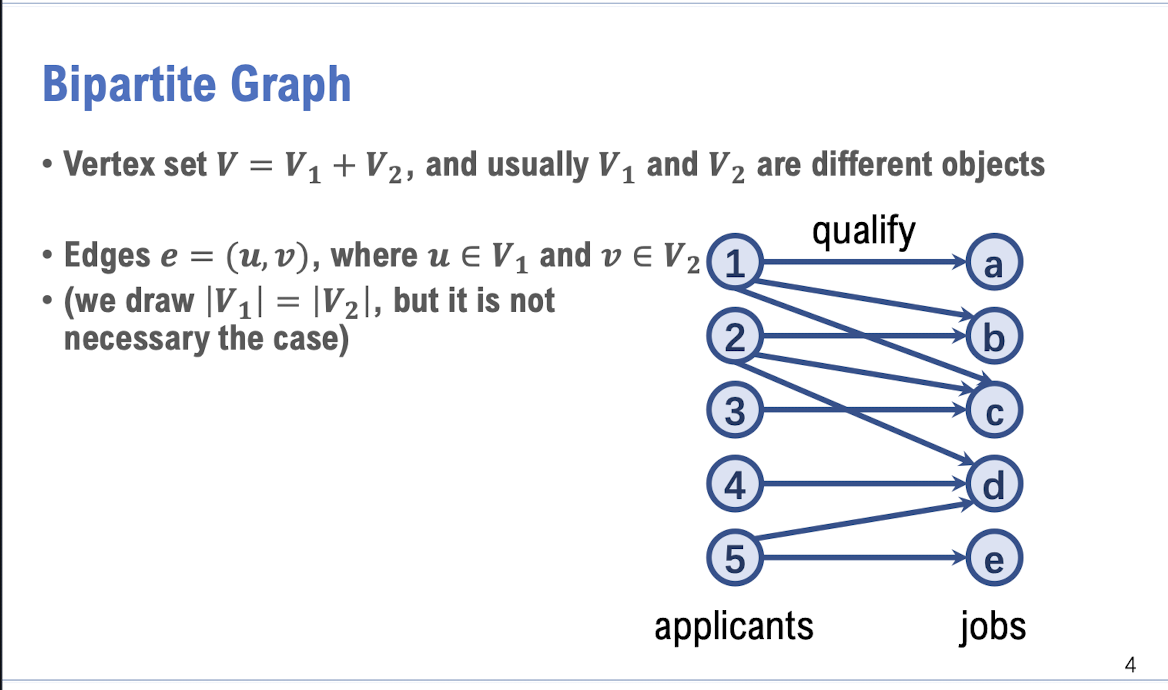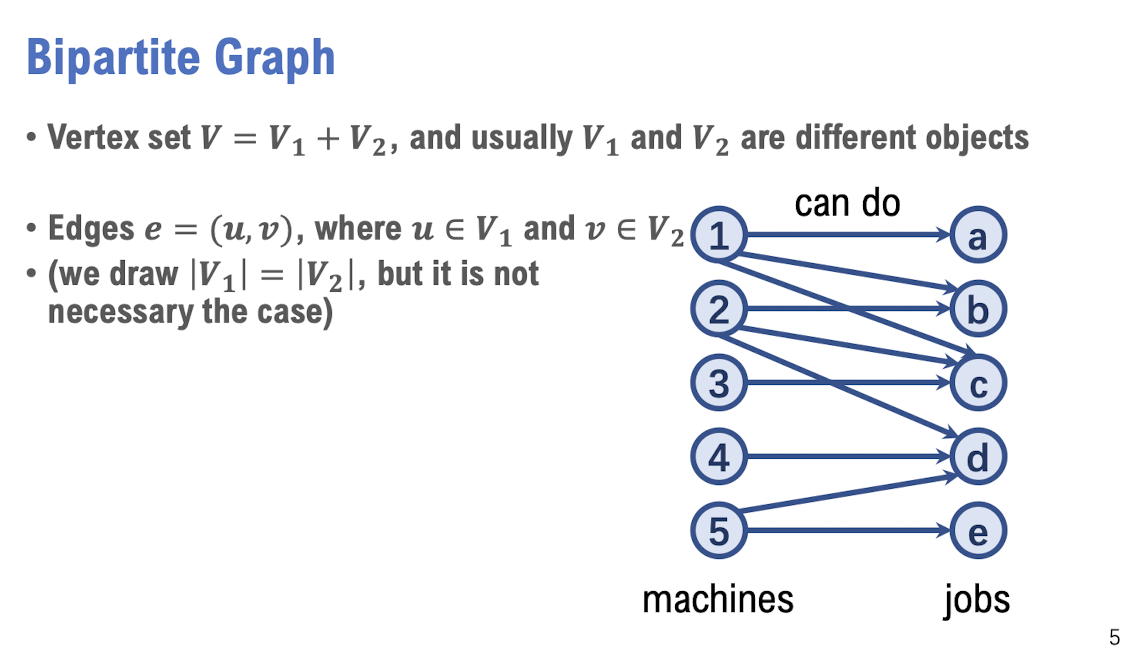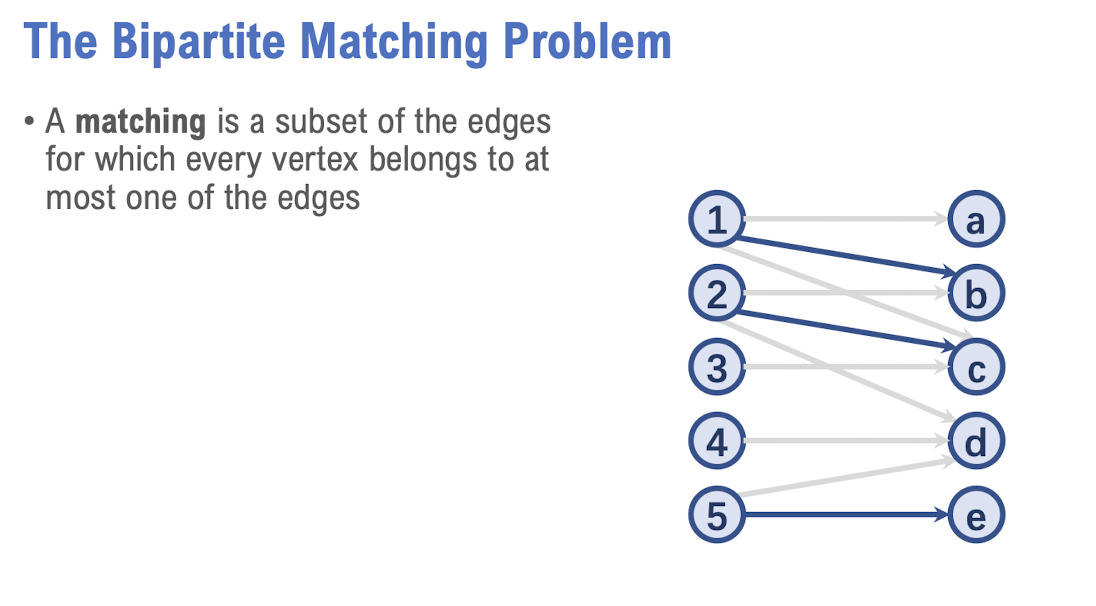


This slide is about formally defining “bipartite graph”. Here’s how you can explain it, avoiding repetition from the previous page:
🎓 Formal Definition of Bipartite Graph
Core task of this page: From intuitive model → abstract definition.
We just saw an example of a bipartite graph: one side is classrooms, the other is exams, and an edge means “the classroom is big enough to hold the exam.”
Now let’s formally define what a “bipartite graph” is:
📐 Mathematical Definition
-
A graph is called bipartite if:
- All its vertices $V$ can be divided into two disjoint sets $V_1$ and $V_2$,
-
And every edge $(u, v)$ satisfies:
- One endpoint comes from $V_1$, the other from $V_2$.
In other words: Edges can only connect “different types”, never “the same type.”
🖼 Graph Illustration
- Left side: classrooms $V_1$, right side: exams $V_2$
- If classroom $i$ can hold exam $j$, draw an edge from $i$ to $j$
The diagram also preserves:
- The drawing style where $|V_1| = |V_2|$ (though not required)
- Edge direction is just for semantics, mathematically it can be ignored (undirected edge)
💡 Summary & Transition
The focus here is to establish a formal language, so we can introduce:
- Matching
- Maximum Matching
- Matching Algorithm
You can summarize this slide with a sentence as a transition:
“With this ‘who can host whom’ bipartite model, our next question is: how do we assign classrooms to ensure as many exams as possible can be scheduled?”
Do you need me to prepare a script for the next page on “maximum matching”?

This slide is about the Bipartite Matching Problem. Let’s explain it point by point:
💡 Text Section Explanation
-
"A matching is a subset of the edges for which every vertex belongs to at most one of the edges."
Translation: A matching is a subset of edges in the graph, requiring that each vertex belongs to at most one of these edges.